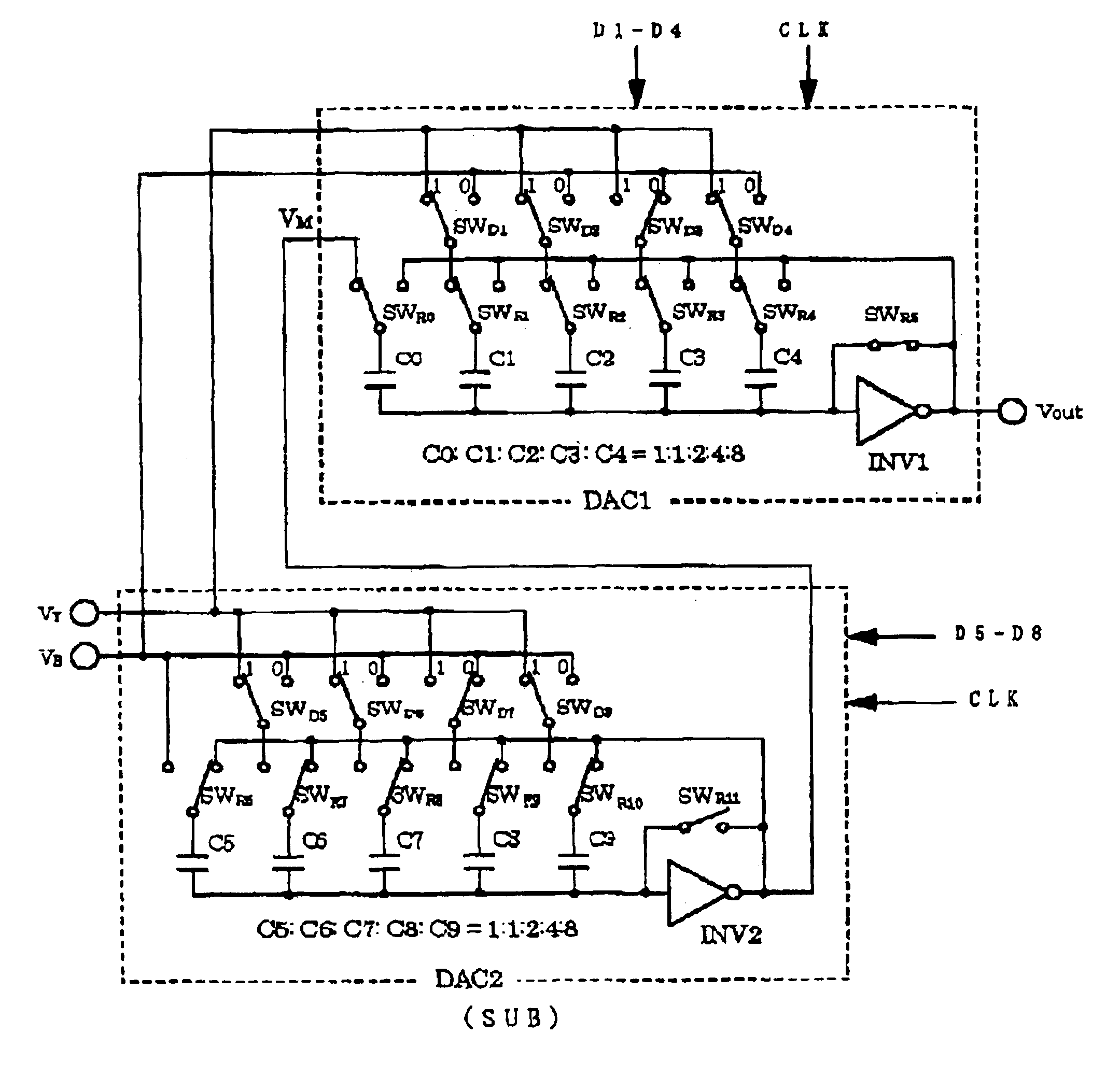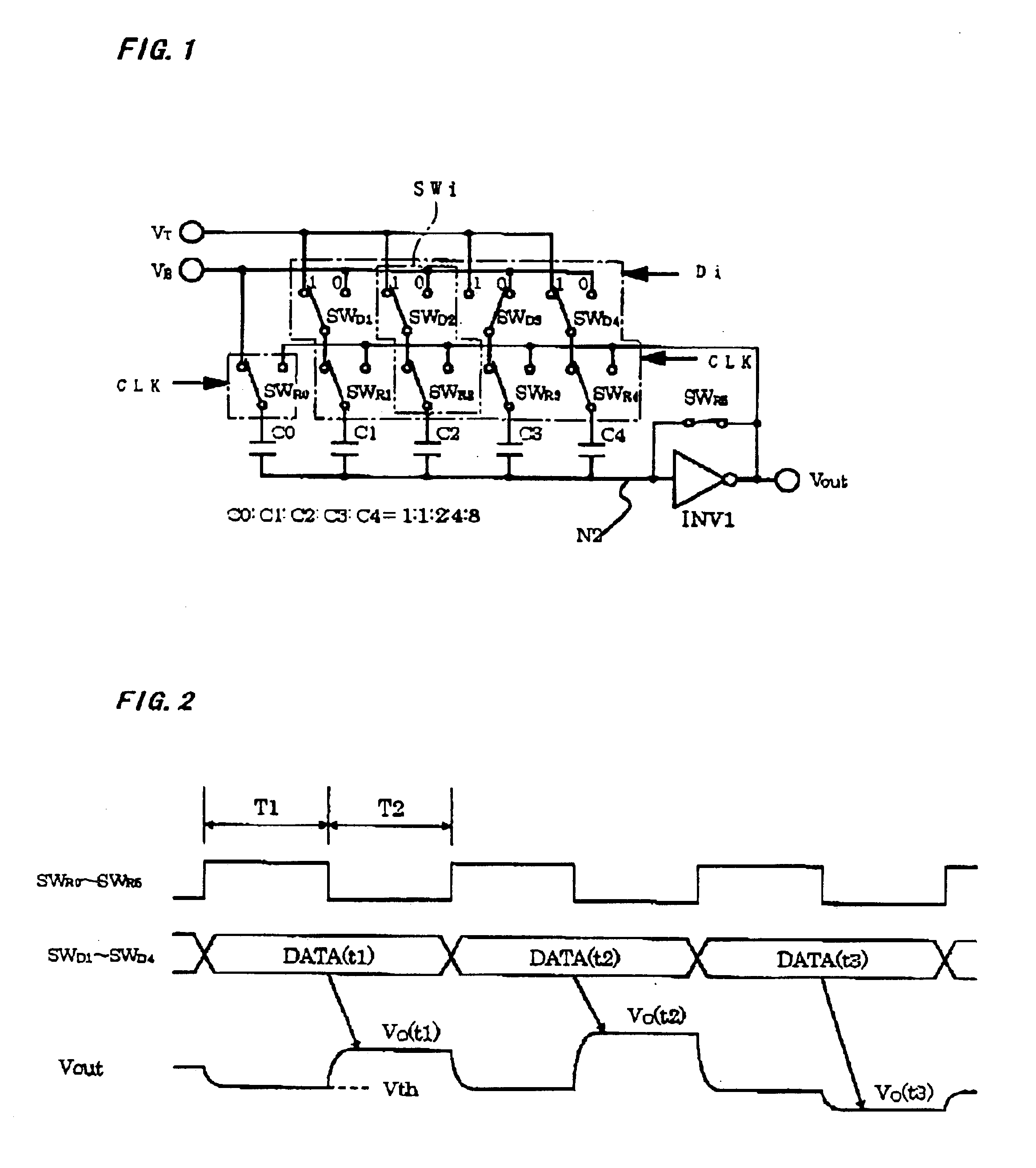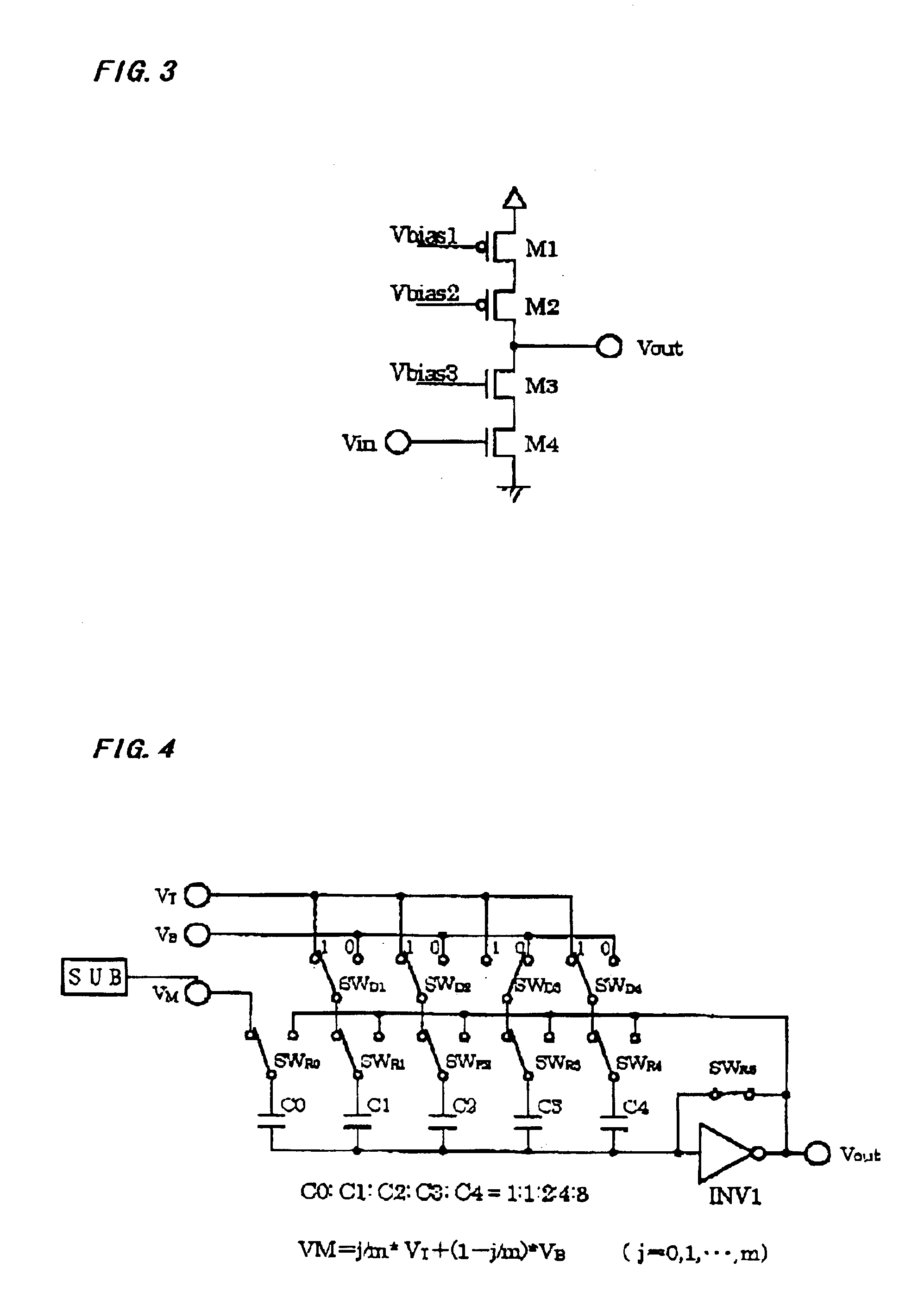Digital to analog converter with a weighted capacitive circuit
a capacitive circuit and digital converter technology, applied in the field of d/a converters, can solve the problems of deteriorating integral linearity, difficulty of convertor, and variation in resistance value, and achieves the effects of small area, high precision, and simple structure and operation
- Summary
- Abstract
- Description
- Claims
- Application Information
AI Technical Summary
Benefits of technology
Problems solved by technology
Method used
Image
Examples
first embodiment
[0045]FIG. 1 is a 4-bit D / A converter shown as a first embodiment to explain the basic operation of the present invention. In FIG. 1, capacitors C1 to C4 are binary-weighted capacitors the capacitance-value ratio of which is 1:2:4:8, and capacitor C0 is a terminating capacitor the capacitance-value ratio of which is 1. One end of each of these capacitors C0 to C4 is connected in common to an input node N1 of an inverting amplifier (INV1). The other end of each of the capacitors C1 to C4 is independently connected to either of a bottom reference voltage VB and a top reference voltage VT that serves as two main reference voltages in the reset operation, and is connected to switches SWR0 to SWR4 that are connected in common to an output of the inverting amplifier INV1 in the output operation. In the binary-weighted capacitors C1 to C4, the main reference voltage connected to each capacitor is selectively given by the switches SWD1 to SWD4 controlled on the basis of digital data, and, i...
second embodiment
[0055]Next, referring to FIG. 4, a description will be given of a method of realizing a D / A converter with a small circuit size even when the resolution is increased in the present invention. Normally, when the intention is accomplished to obtain n-bit resolution by using the conventional structure of FIG. 15 or the structure of the present invention of FIG. 1, the full capacitor size with respect to the unit capacitor is 2n because the ratio of required binary-weighted capacitors is 1:2:4: . . . :2(n−1). This is, for example, 256 in 8 bits and is 1024 in 10 bits which become exponentially great, and an extremely large circuit area is required for a high-resolution D / A converter. A method for solving this problem is shown in FIG. 4.
[0056]The structure of FIG. 4 is exactly identical to that of FIG. 1 except for the voltage given to the terminating capacitor C0, and is made up of an inverting amplifier (INV1), a feedback switch SWR5 provided between the input and output of the inverti...
third embodiment
[0060]Next, referring to FIG. 5, a description will be given of a third embodiment formed as a more concrete structure based on the second embodiment shown in FIG. 4. In the foregoing description, it has been mentioned that the sub-reference voltage can be generated by a string of a plurality of resistors in series. However, the capacitor can obtain higher precision than the resistor in a CMOS process. FIG. 5 shows an 8-bit D / A converter realized by adding a D / A converter having the same structure as that of FIG. 1 as a sub reference voltage generating circuit SUB and by combining two 4-bit D / A converters together so that the precision of the sub-reference voltage can be determined by a capacitance-value ratio without using the resistor string.
[0061]In FIG. 5, DAC2 is a 4-bit D / A converter having the same structure as that of FIG. 1, and is made up of an inverting amplifier INV2, a feedback switch SWR11 provided between the input and output of the inverting amplifier INV2, binary-we...
PUM
 Login to View More
Login to View More Abstract
Description
Claims
Application Information
 Login to View More
Login to View More - R&D
- Intellectual Property
- Life Sciences
- Materials
- Tech Scout
- Unparalleled Data Quality
- Higher Quality Content
- 60% Fewer Hallucinations
Browse by: Latest US Patents, China's latest patents, Technical Efficacy Thesaurus, Application Domain, Technology Topic, Popular Technical Reports.
© 2025 PatSnap. All rights reserved.Legal|Privacy policy|Modern Slavery Act Transparency Statement|Sitemap|About US| Contact US: help@patsnap.com



